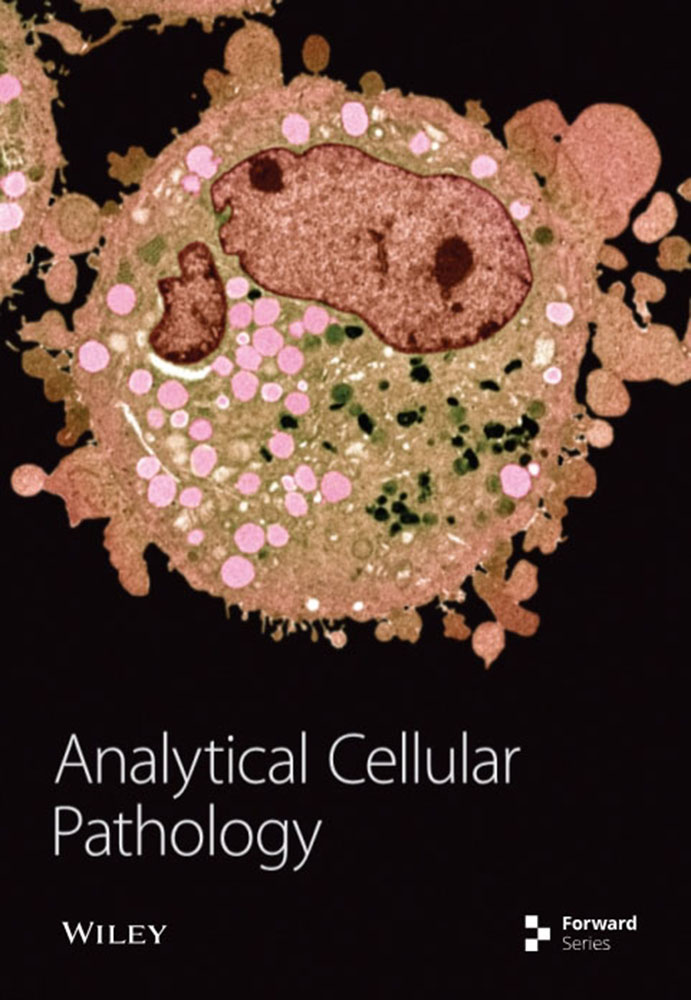Identification of a 16-MTGs Prognostic Signature in Diffuse Large B-Cell Lymphoma
IF 2.7
4区 医学
Q3 CELL BIOLOGY
引用次数: 0
Abstract
Background. Diffuse large B-cell lymphoma (DLBCL) is one of the largest lymphoma subcategories. Usually, 50%–70% of DLBCL patients can be cured by the standard treatment. But, at least one third have bad prognosis. Based on this situation, the research on DLBCL therapy strategy is still indispensable. Methods. A prognostic signature was built according to the public data and bioinformatics methods, the stability and reliability was assessed and validated. GSEA was performed to explore the difference in different groups. Consensus clustering and immune infiltration analysis were conducted comprehensively. Results. In this work, a signature based on multiple metabolism-associated genes (MTGs) was established, containing 16 MTGs, to predict the prognosis of DLBCL patients. The accuracy and effectiveness of this signature have been verified by three external validation sets. According to the risk formula, DLBCL patients were divided into high- and low-risk groups, and the survival rate of the low-risk group was significantly higher than that of the high-risk group. Furthermore, gene set enrichment analysis (GSEA) demonstrated that beta-alanine metabolism and regulation of actin cytoskeleton signal pathways were enriched in the low-risk group. The actual survival and nomogram-predicted survival matched well both in the training cohort and verification cohorts. Conclusion. In general, our prognostic signature can provide reliable and valuable information for medical workers in predicting the prognosis of DLBCL. A preprint was made available by the research square in the following link: “https://www.researchsquare.com/article/rs-1468741/v2.”弥漫大 B 细胞淋巴瘤 16-MTGs 预后特征的鉴定
背景。弥漫大B细胞淋巴瘤(DLBCL)是最大的淋巴瘤亚类之一。通常,50%-70%的DLBCL患者可通过标准治疗治愈。但至少有三分之一的患者预后不良。基于这种情况,对 DLBCL 治疗策略的研究仍然不可或缺。研究方法根据公开数据和生物信息学方法建立预后特征,评估并验证其稳定性和可靠性。进行GSEA分析,探讨不同组间的差异。综合进行共识聚类和免疫浸润分析。结果这项研究建立了一个基于多个代谢相关基因(MTGs)的特征,包含16个MTGs,用于预测DLBCL患者的预后。该特征的准确性和有效性已通过三个外部验证集得到验证。根据风险公式,DLBCL 患者被分为高危和低危两组,低危组的生存率明显高于高危组。此外,基因组富集分析(GSEA)显示,β-丙氨酸代谢和肌动蛋白细胞骨架信号通路的调控在低危组中富集。在训练队列和验证队列中,实际存活率和提名图预测的存活率都非常吻合。结论总的来说,我们的预后特征能为医务工作者预测DLBCL的预后提供可靠而有价值的信息。研究方通过以下链接提供了预印本:"https://www.researchsquare.com/article/rs-1468741/v2"。
本文章由计算机程序翻译,如有差异,请以英文原文为准。
求助全文
约1分钟内获得全文
求助全文
来源期刊

Analytical Cellular Pathology
ONCOLOGY-CELL BIOLOGY
CiteScore
4.90
自引率
3.10%
发文量
70
审稿时长
16 weeks
期刊介绍:
Analytical Cellular Pathology is a peer-reviewed, Open Access journal that provides a forum for scientists, medical practitioners and pathologists working in the area of cellular pathology. The journal publishes original research articles, review articles, and clinical studies related to cytology, carcinogenesis, cell receptors, biomarkers, diagnostic pathology, immunopathology, and hematology.
 求助内容:
求助内容: 应助结果提醒方式:
应助结果提醒方式:


